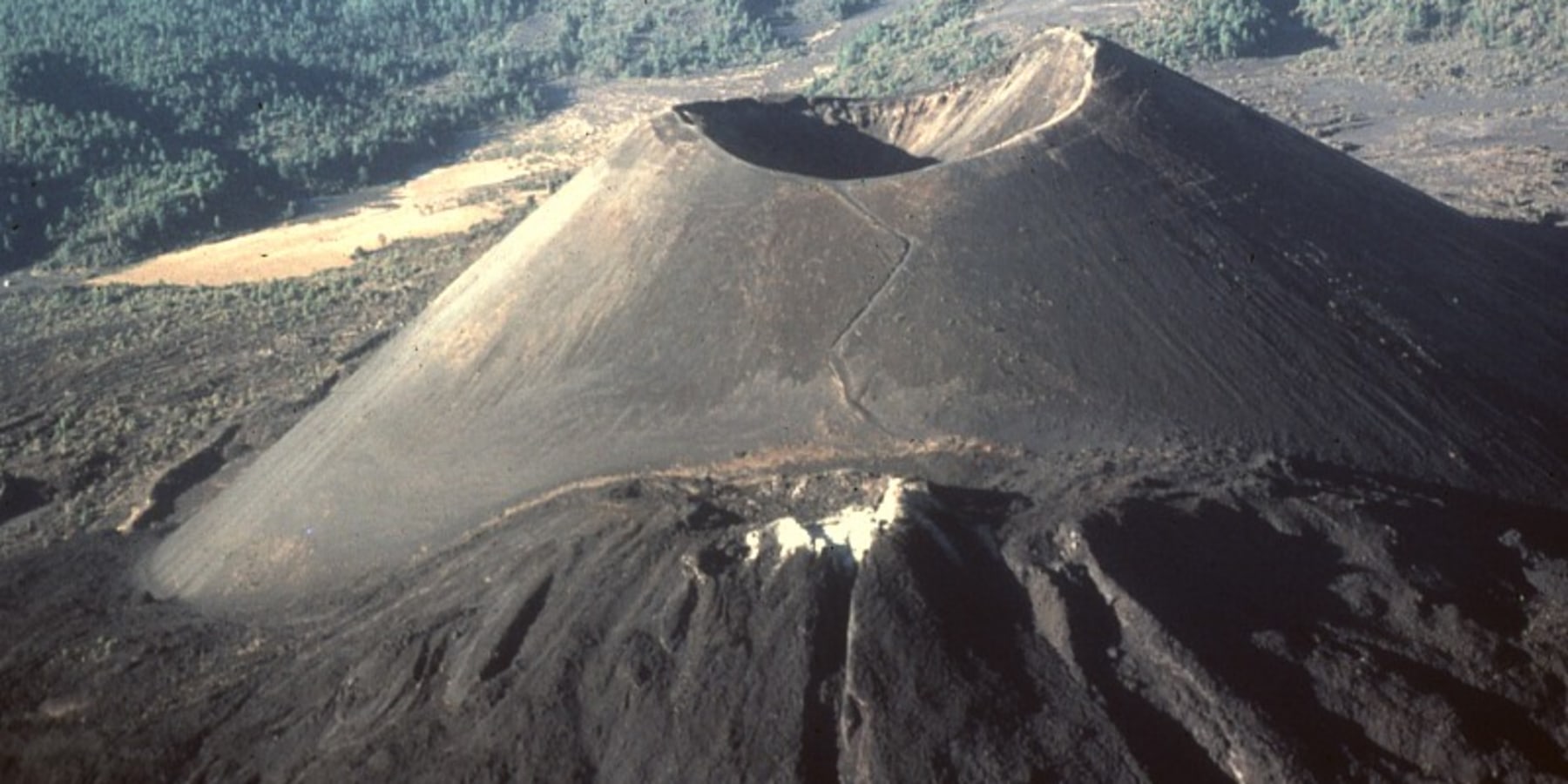
On Saturday, February the 20th 1943, a farmer in a small village in central Mexico set out to plough his cornfield. It seemed like any ordinary Saturday, the site was quiet and the skies were clear. The farmer, Dionisio Pulido, was attending his crop of corn when he heard low rumblings emanating from the earth. This in itself was nothing particularly new; indeed, the area in which he lived, just outside the quaint village of Paricutin, had been experiencing small earth temblors for the past 2 months.
Suddenly and without warning, a huge crack appeared in the dirt directly in front of where he stood. Instinctively, Dionisio Pulido attempted to fill the hole with rocks. This was in vain, soon a terrible odor started coming from the fissure on the ground, a smell that can only be described as rotten eggs.
Two villages were buried by the volcano's lava and ash, Paricutin and San Juan Parangaricutiro. A striking example of the volcano's effects can be seen in photos of the church that was buried neck high in San Juan Parangaricutiro. Only the steeple of the church can be seen today with the landscape forever and dramatically altered with acres upon acres of lava rock stretching out in all directions. Incredibly, there were no fatalities from the falling rock or scalding lava, although lightning that accompanied the original event was blamed for 3 deaths.
The former residents of the two villages had to relocate with the memory of that fateful February day forever etched in their memories. What they had witnessed was extraordinary, for what they had observed with their own eyes was the birth of a volcano. The volcano's cinder cone ultimately reached its full height of 1,391 feet where it stands today. Thankfully, the type of volcano that occurred in Paricutin is classified as monogenetic, meaning that it will never erupt again. In 1952 all activities ceased after 9 years, 11 months, ten days and 6 hours, and it is now considered a dormant volcano.


